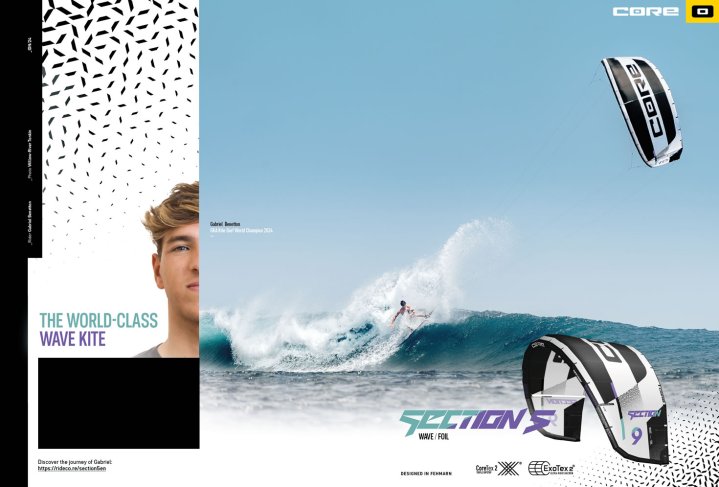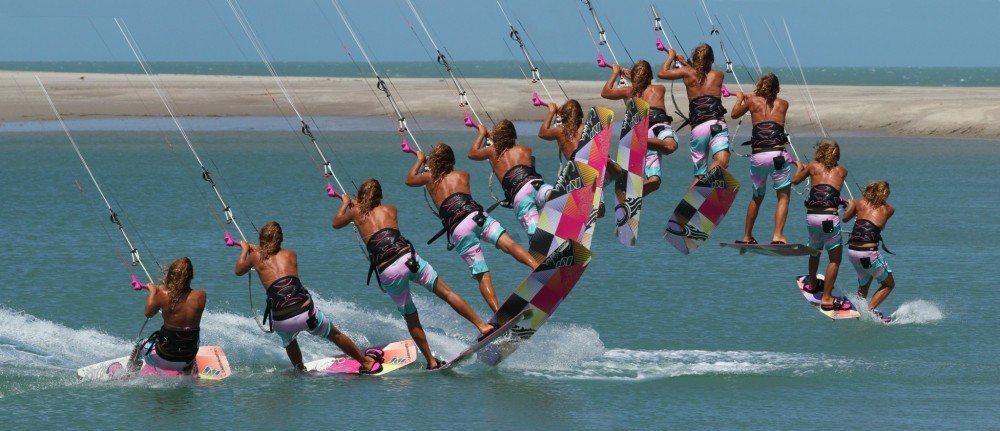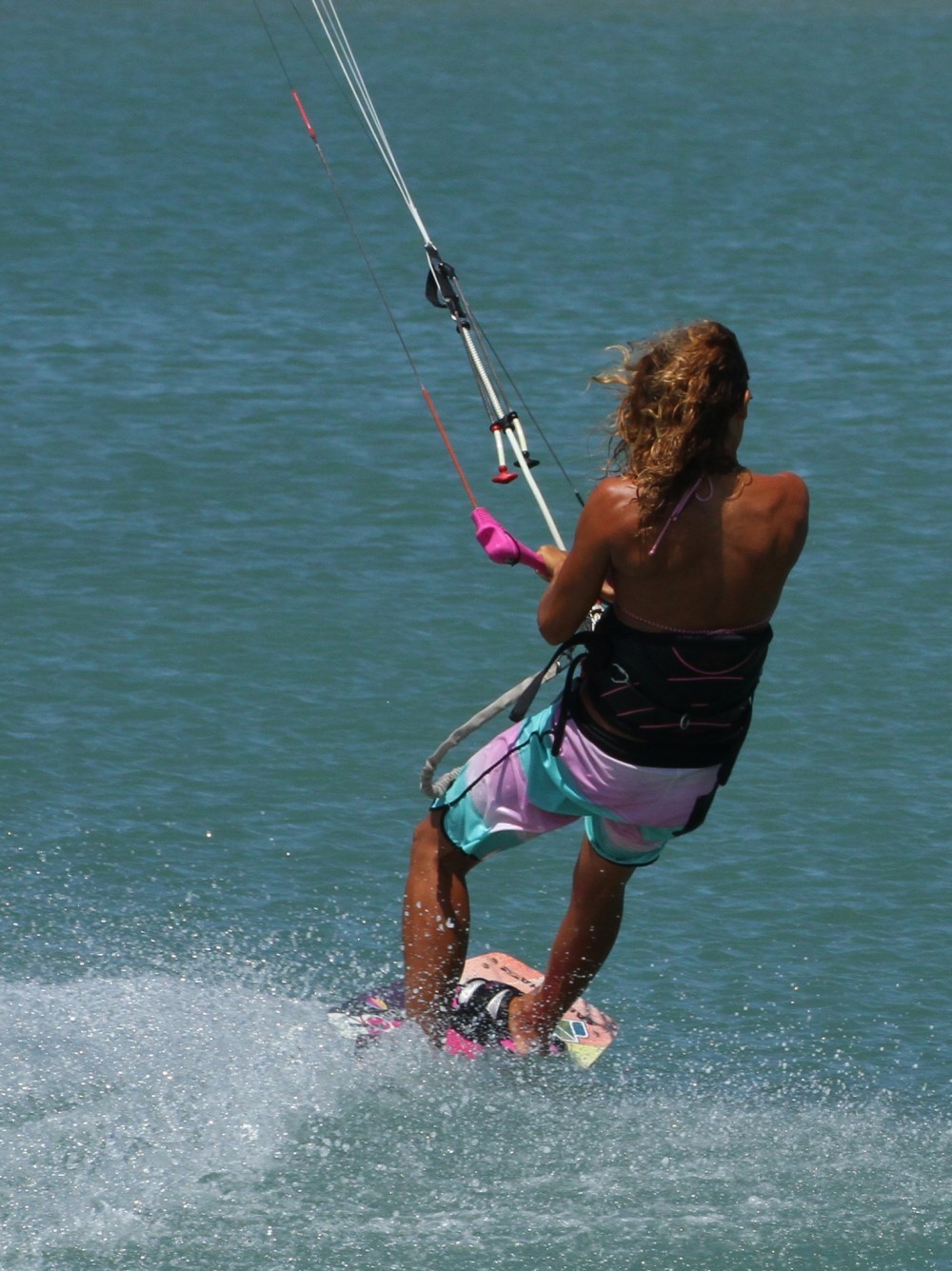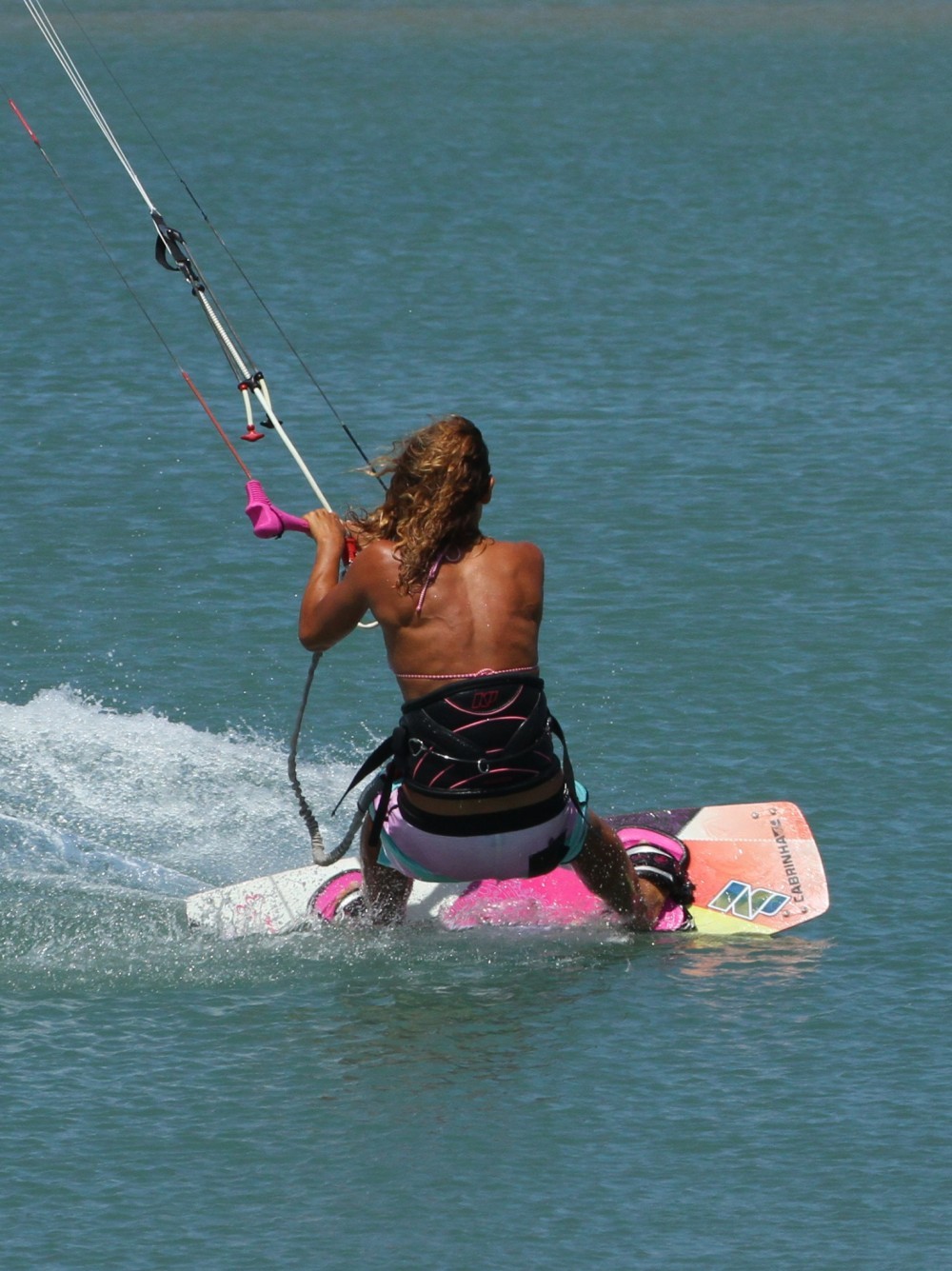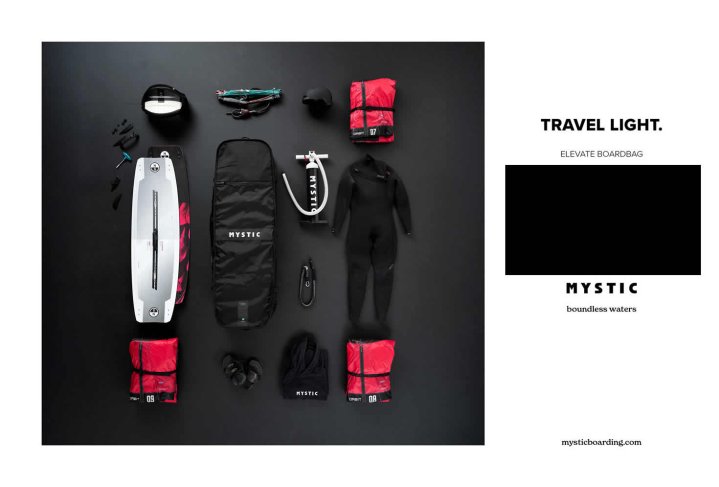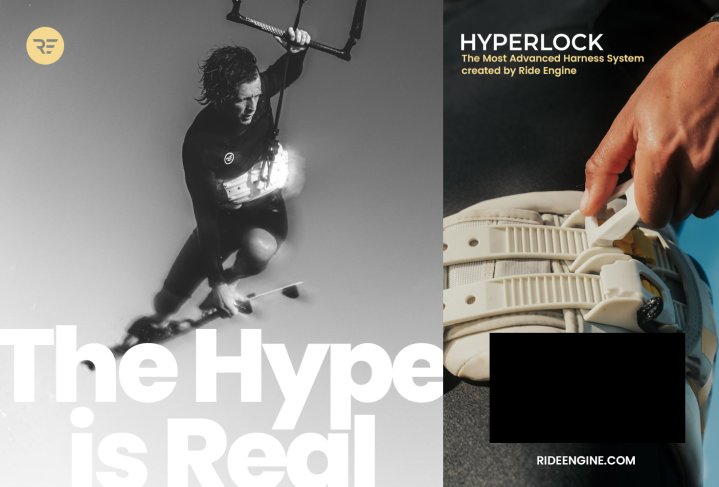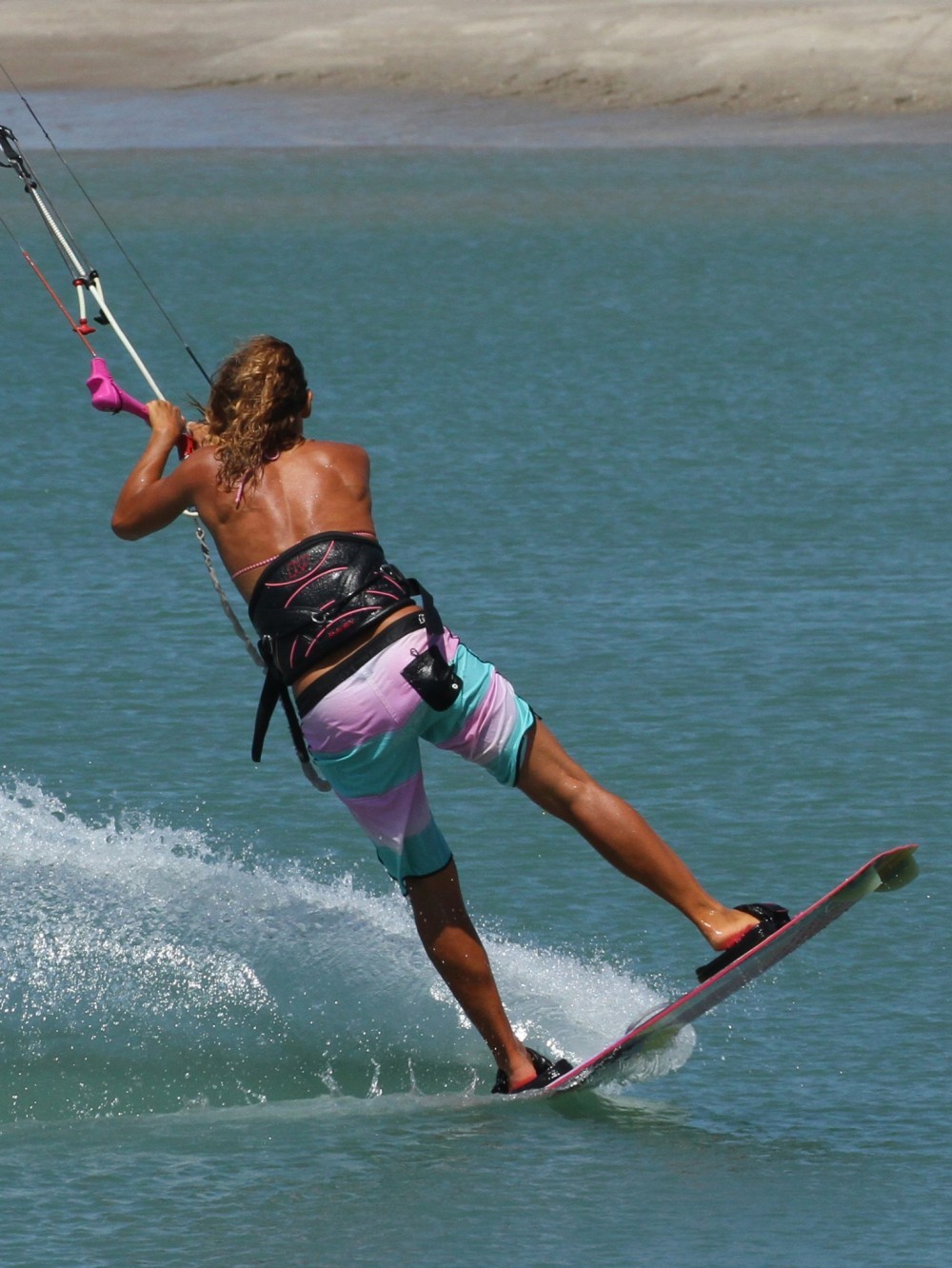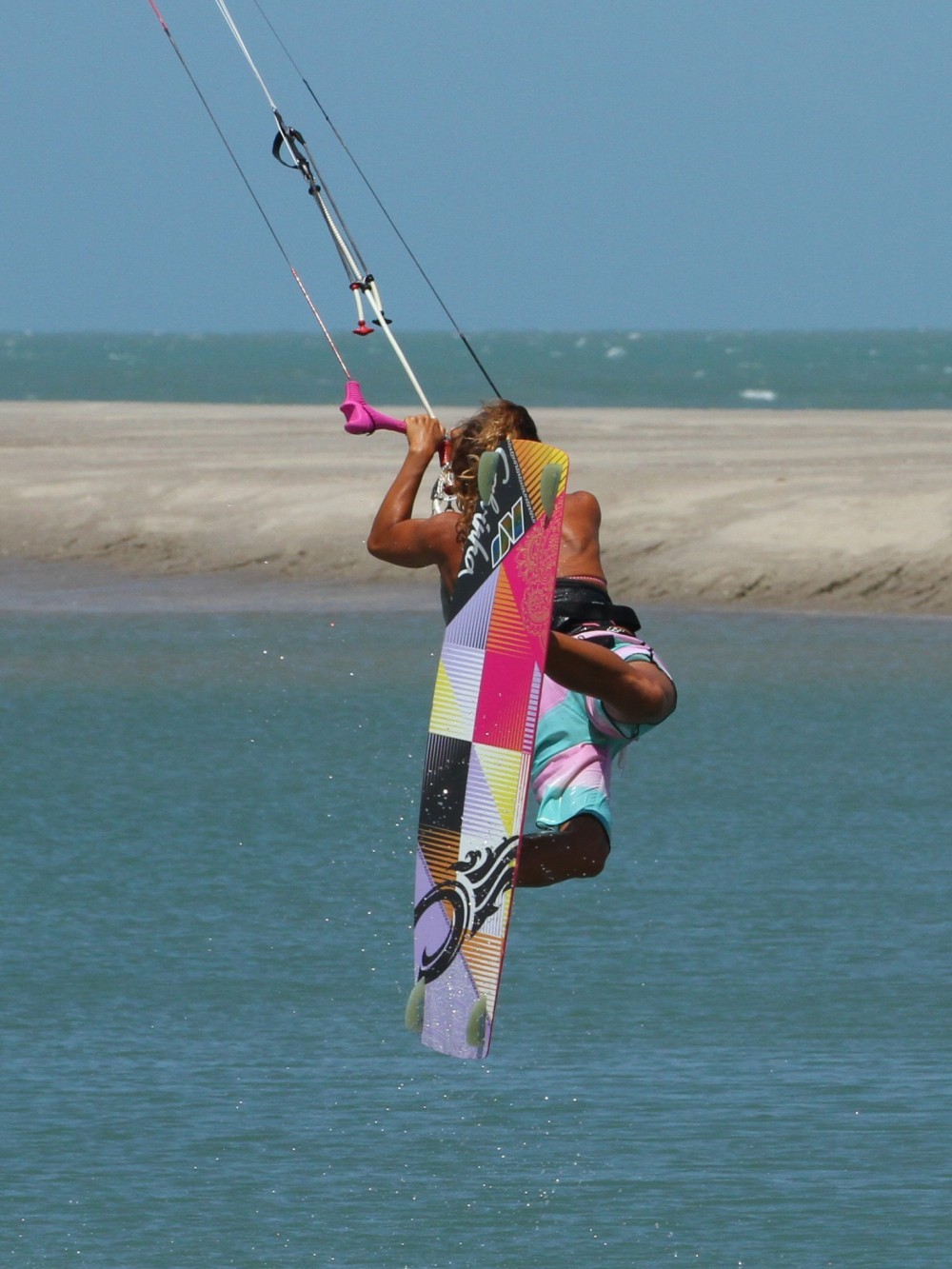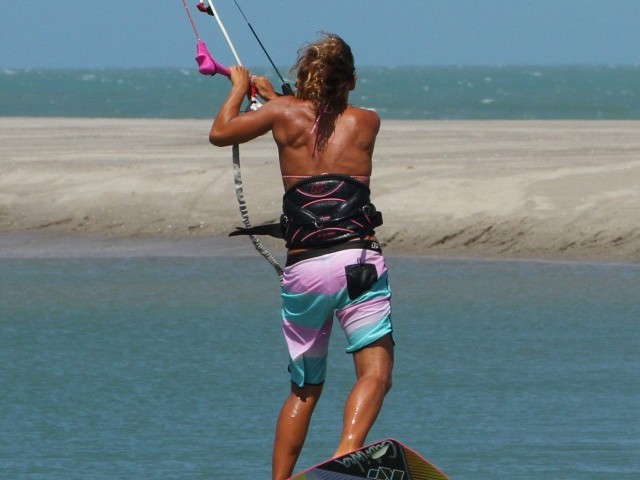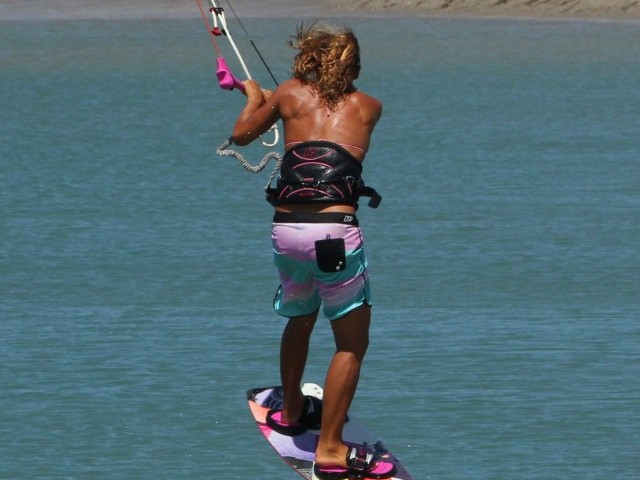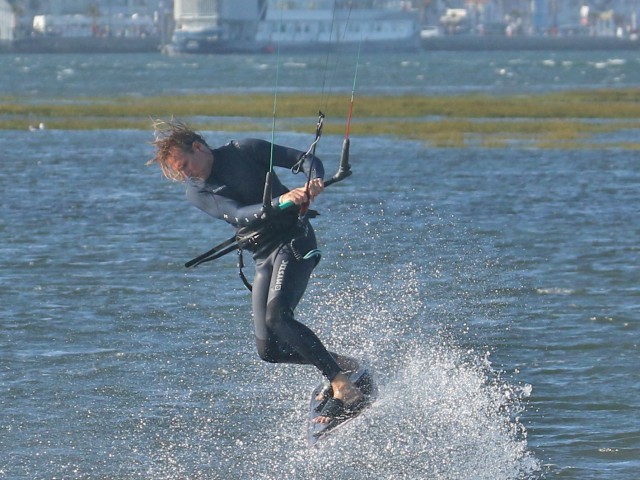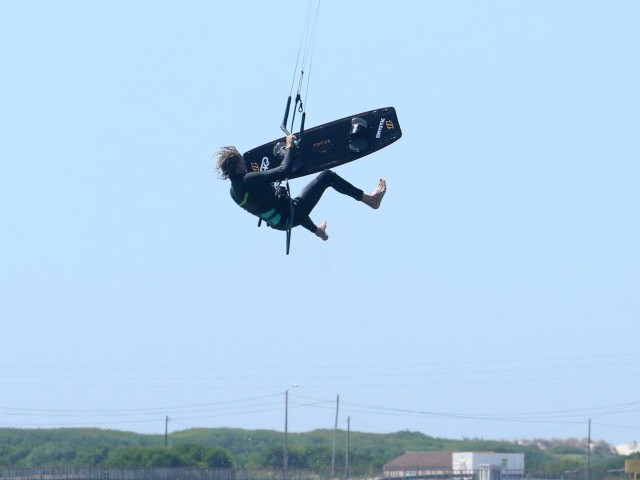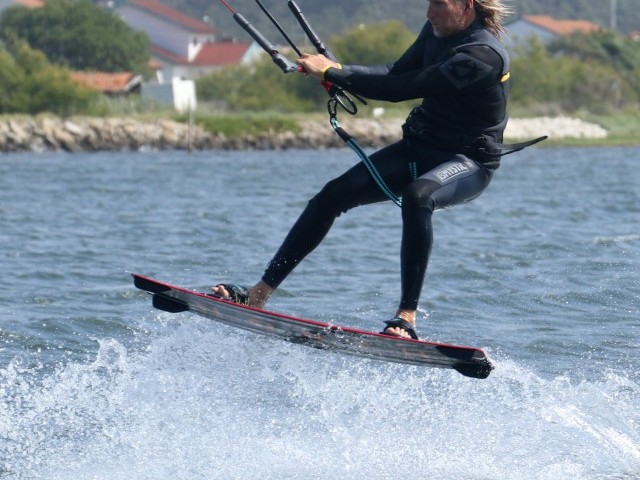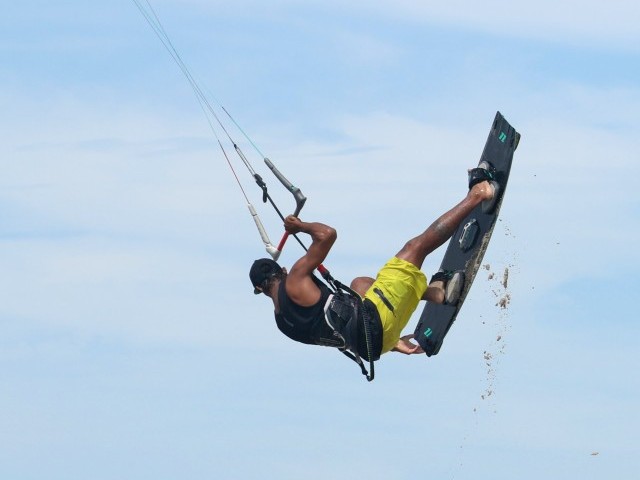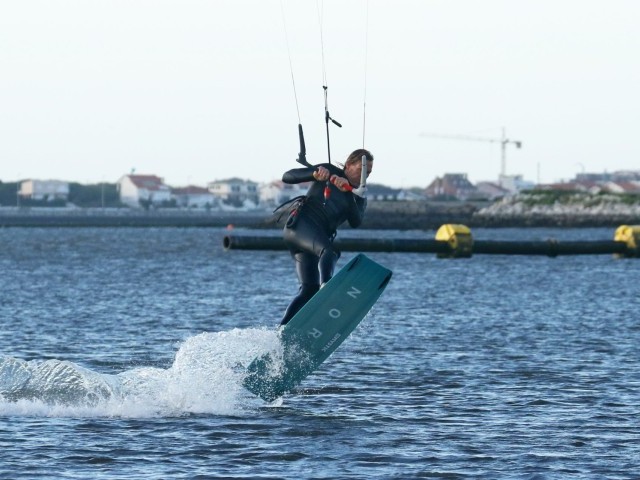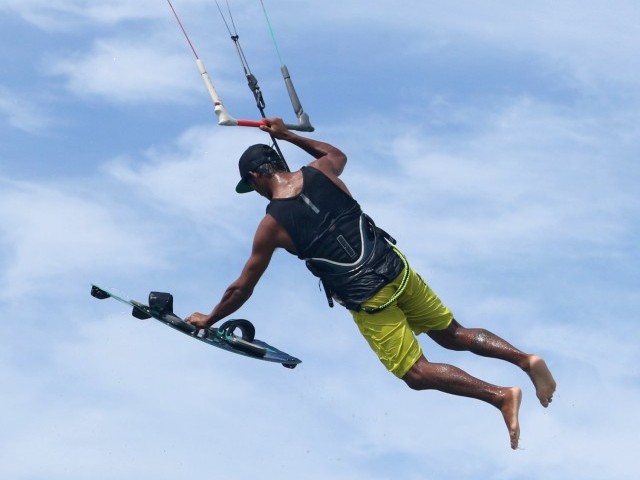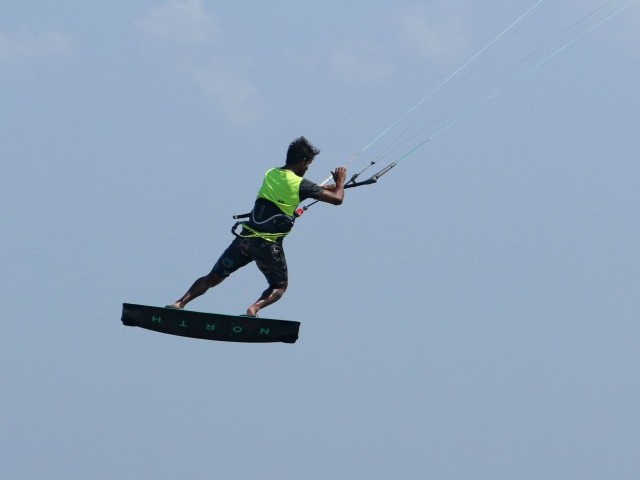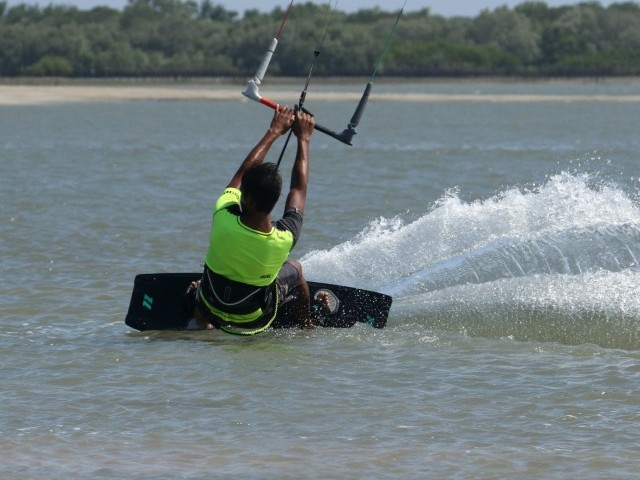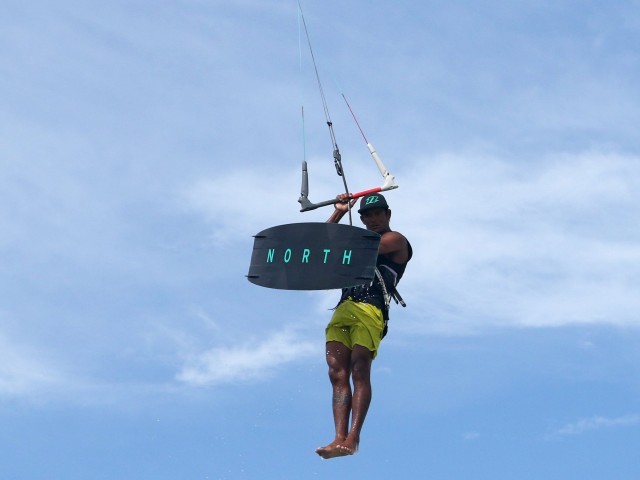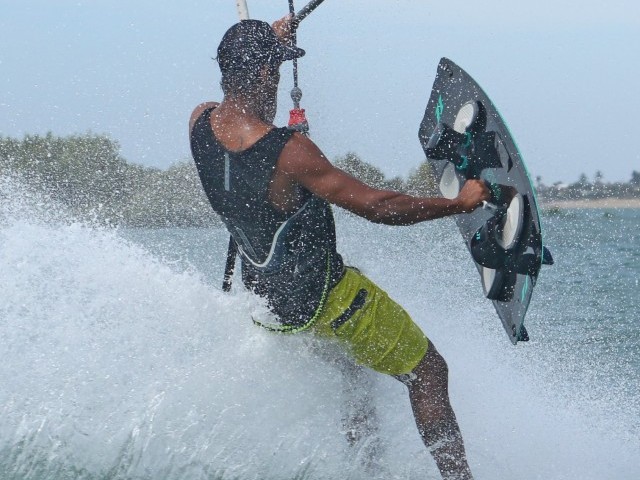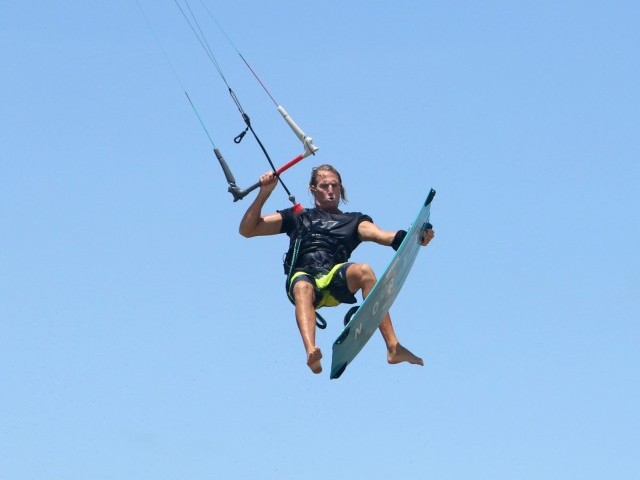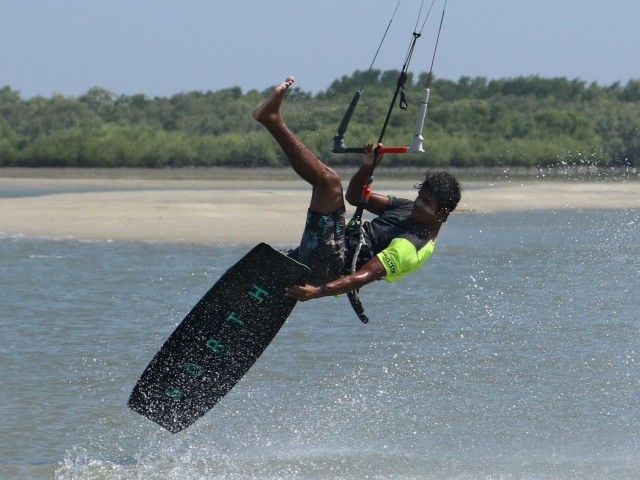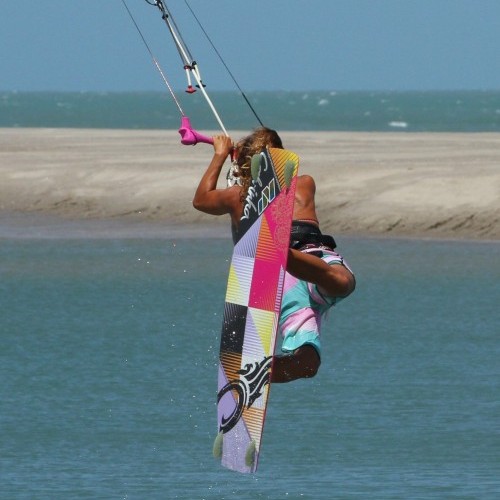
Krypt – Raley to Toeside
Technique / Advanced
Introduction
We all love a Raley, and funnily enough most of us learn on our preferred side, favourite foot forward, leading to a solid heelside touch down. It seems a shame to ignore the other side and deny yourself the kudos of flicking your board both ways. Hence the Raley to toeside, and just to prove it is a genuine move it even has its own name, the Krypt.
You can happily learn this both hooked or unhooked. We’ll be going through the unhooked variant, but rest assured that apart from the actual physical act of unhooking the rest remains pretty much the same for both, from approach to landing.
The Approach
As with all things pop your approach will determine how well things will turn out. You can see in the picture that Karine has her kite just below 1 o’clock, she has turned the board off the wind onto a very broad reach, whilst keeping her weight both upwind of the board and back towards the tail of the board. Her front leg is extended and both her elbows are tucked into her sides. Not only is this the perfect position from which to unhook, it is also the perfect set up for a Raley..
Kite height is important, to high and you’ll fly, but too low and you may not have the confidence to pop, so a happy medium is required, at a height just about where your kite is happily flying forward without creating lift, as a reference point this will be just below 1 or 11. Suddenly bearing off the wind allows you to loose tension from the lines and unhook, and it lets the kite drop back a touch so that it will pull you downwind, easier landing, once you pop. Weight upwind positions the board between you and the kite so you can pop without the kite pulling your shoulders prematurely over the board. Weight back over the tail so that you can quickly and efficiently carve the board upwind to pop, the extended front leg helps this. Elbows are tucked in to stop the kite from pulling your arms out straight and you over the board. You are now officially ready for the Raley part.
The Carve
Your action carving up against the kite needs to be precise and quick, otherwise the kite will win the tug of war. With your weight back over the tail of the board you only need to turn your shoulders and the board with carve up on the shape that some lovely board designer put there for such a purpose (thanks DK).
Here in Pic B. Karine has turned her shoulders and the board carves upwind, putting tension on the lines and thus generating some resistance. This resistance is your platform to pop off. However to make sure that you are in control you need to keep your position. The simplest way to do this is not to let the kite drift up, which it will want to do as you pull against it. Karine keeps both hands in, arms bent, but her focus is on keeping the front hand close, as it’s natural to pull on the back one as she turns away from the kite. Also as Karine carves she resists the pull from the kite with her back leg, which combined with her arms allows her to keep her weight upwind, on that edge, turning the board towards the wind.
The Pop
A raley is merely an extreme pop. If you’ve managed to resist on the aforementioned platform you will be in a position to, and have something from which to pop. As the board turns underneath you it’s time to stamp. Karine feels the board turning under her, and more importantly feels herself being pulled forwards by the kite. This is her cue to pop. She pops hard against the board with her back foot by stamping down and extending her back leg as explosively as possible. Her front leg has remained extended throughout. The amount of pop you get will depend on a few variables – speed, power, timing, aggression, but your aim is to extend, really concentrate on straightening your legs, uncoiling the spring which is you.
The Flick
You have two possibilities in a Raley, to end up with the board horizontal and behind you, or flicked around vertically behind you. The second option will make all number of tricks more achievable and the Krypt is no exception. This flicking action is merely a continuation of the carve upwind and by extending and letting the board go you should end up here. Now that you are airborne you also need to take stock of what is going on lest adjustments need be made.
Karine has let her board flick around by carving hard to get the board into the wind and extending fully as she took off. She now wants to make sure that she is in control, and here that means that the kite is doing what it should. If you’re well versed in Raleys, you know that once you have it nailed the kite doesn’t move, but if this side is new chances are the kite will have gone up. If it has, steer it down, Karine’s bar here is angled forward to keep the kite from rising. You’ll need to use both hands. Karine will also be spotting her landing, that is to say she’ll be working out where she’ll probably land so that she can prepare for it.
Landing Gear Down
The beauty with a Raley is that gravity always wins and your legs will naturally fall underneath you. That said if you start with your kite at 45˚ or below Newton may not be able to save you. You can see in the picture the advantage of the flick, Karine’s left foot is forward as her front foot was flicked around behind her. If you have a strong toe side preference, chances are that you’ll automatically keep this position, but just to make sure, try to bring your knees up towards you as the board falls. As your knees come up you can pull your toeside leading knee under the bar, much as you would for a gentle pop to toeside. Here Karine pulls her left knee through underneath her. AND her bar is still in close.
The Result
By pulling her left knee through and under the bar, Karine will now happily and comfortably land tail first for a toeside landing and a Krypt claimer. By keeping the bar in close she lands over the board and is not pulled forwards by the kite. Once you have landed, either bear away towards the kite and hook back in, or casualy pop back to heelside and ponder what you’ll do next.
Top Tips
Start off gently, you don’t need to be hounding along at Mach 10 with the intention of a full blown Raley. A decent extended pop will give you the feel, so concentrate on carving and extending your legs and body before landing.
Now have a good look at the Sequence and Videos.
Common Problems
If you find that you are landing very downwind and having to carve around onto your heels, the chances are that either your kite has drifted up, and or your arms have extended which means that the kite will pull you too far downwind. Keep your arms tucked in and don’t be afraid to dive the kite down to keep you going where you should be.
If you are catching your toeside edge on landing you don’t have enough height, so either pop harder or try with your kite slightly higher in the window.
Keystones
- Approach with weight upwind, back and front leg extended
- Carve hard upwind with arms in
- Explode against the edge with your back foot
- Extend and feel the flick
- Pull arms in and bring back knee through
This technique article was in Issue 44 of IKSURFMAG.
Related
By Christian and Karine
Christian and Karine have been working together as a coaching team, running improver to advanced kitesurfing clinics since 2003.




